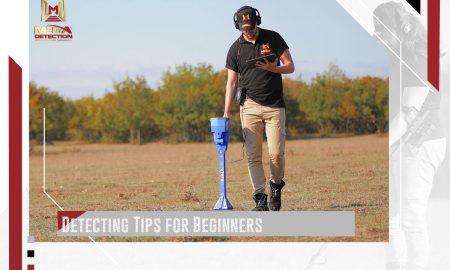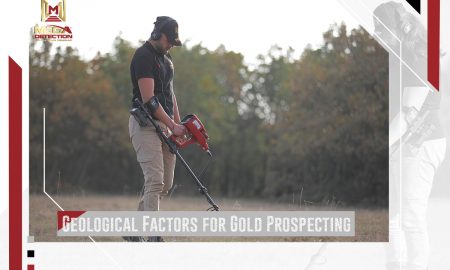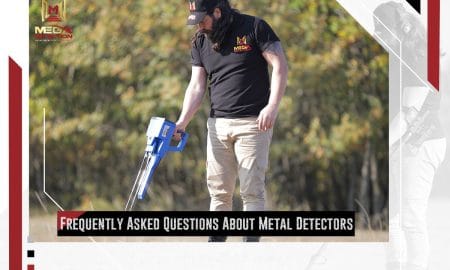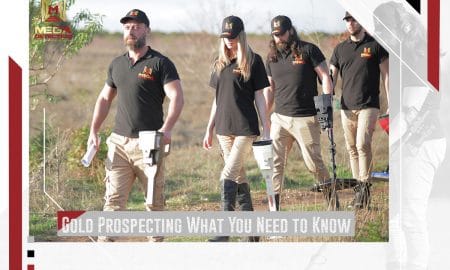How To Find Relics
How To Find Relics
Metal detecting for relics is one of the most rewarding hobbies out there. If you are a huge history buff, and love nothing more than discovering pieces of history firsthand. Relics litter the land in almost every corner of the globe.
For any metal detecting trip to be successful, you should plan well before you leave the house. I like to make a checklist of all the things I will need, do some research, test my gear, and choose my location. Planning well will make your trip less stressful and more efficient. Part of proper planning involves making sure you have the right detector by your side.
Relics can be found all over the globe. Before you begin any search, do some research on the area you’ve chosen to hunt. Anywhere people have lived before or travelled through has the potential to produce relics.
Not all metal detectors are created equal. It is important to research the different types of metal detectors to ensure you choose the proper machine for your skill level, budget, and desired target.
Very low frequency (VLF) detectors are the most common detectors, and all major detector brands will have VLF detectors. Pulse induction (PI) detectors are becoming more common, and most companies have one or two models. Each have their pros and cons, so be sure to research which will be most effective for you.
Many times, entry level and intermediate metal detectors are VLF. They are typically easier to use and require less knowledge to run. I recommend a VLF detector for beginners. It is important to get a VLF model with good ground balancing and discrimination.
Many locations have highly mineralized soil. If your machine does not ground balance well, you will have a lot of interference from this type of soil.
Pulse induction machines work differently than VLF machines. They typically search deeper than VLF machines and are fantastic in saltwater environments. They don’t have discrimination, which can be problematic in certain environments.
PI machines are better in highly mineralized soils but can be more expensive and heavier than VLF detectors. Research PI machines, and if you think they are right for you.
Many metal detectors have interchangeable search coils. Concentric coils will search deeper than wide scan, but the discrimination will be different. The larger the search coil the deeper it will scan, but a smaller coil can get into smaller spaces and operate better in mineralized soils. Research the best type of coil for the soil in your area and your chosen targets.
Many metal detectors require AA or 9-volt batteries. Others have rechargeable battery packs with backup AA or 9-volt power supply. Always make sure to take extra batteries along. If you find yourself in a difficult soil and your detector begins to act up, it will drain your battery quicker than normal.
A lot of relic hunting consists of searching in remote areas. These include, but are not limited to, dense woods, mountains, abandoned fields, swamps, ancient settlements, and battlefields. Each will produce its own type of relics, so be sure you know what type of relics you are looking for. You don’t want to dig up an axe head, think its worthless, and find out later it was a piece of medieval or WWI equipment.
River hunting can be different than traditional land hunting, but most civilizations settled near waterways. There is a good chance you will find relics near or even in rivers and streams. Be aware that relics in waterways can often be buried deeper, as the river is a constantly moving and changing environment.
Make sure that your metal detector has a waterproof coil. You don’t need a fully submersible model unless the water is very deep, just make sure you don’t drop it in the water!
These areas once had water running through them or are natural washes for flash floods in the desert. People followed rivers and creeks to get from point A to point B. Anywhere people followed the water has a chance of being home to relics.
Many battlefields are off limits as they are now national parks or cemeteries, you may not be able to detect on some of them. Ask for permission to hunt land adjoining the battlefield, where the battle may have spilled over. Research where in the area camps were located, or where battle staging areas were.
Because a lot of relics are found in remote places, it is always advisable to bring along a GPS device, a paper map, and your cell phone. Keep in mind, electronic devices can cause electromagnetic interference with metal detectors, so you may want to keep them turned off unless you need them. Keeping a paper map with you and mapping out your route will keep you on the right path in the event your GPS device or cell phone battery dies.
Always walk your metal detecting site before you begin. Take note of the surface soils, looking for indicators of past activities. Keep an eye out of pottery fragments, glass, foundation stones, chimneys, brick fragments, and paths.
It is always a good idea to keep a log of your finds. Document what the item is, where it was found, and when it was found. This will give you a good idea of areas you have already searched and could potentially start to form patterns, so you know the best place to search next.
Turn your discrimination down as low as you can stand. While not everyone is looking for iron relics, a higher discrimination could mask a good target sitting too near a ferrous target.
As with any metal detecting trip, you should always be as safe as possible. Remain aware of your surroundings, and don’t get so wrapped up in your detecting that you block out everything else.
If you are in a remote or very rural area, you should keep an eye out for wildlife or livestock. We ended up with cows on one side of our camp, and bears across the river on the other side last time we detected in Utah. So, remain aware and keep an eye out for wildlife.
There is no doubt you will find targets in most areas. The hardest part is staying motivated and positive when all you seem to be finding is junk. I was near giving up on my last metal detecting trip due to the high amount of trash in the area. But I kept at it and ended up finding a couple pieces of native silver! Keep going. Mixed in with all that trash are truly wonderful targets.
This is always one of the most important tips. If you aren’t having fun, you won’t want to keep doing it. Metal detecting requires patience and perseverance. If it were easy, everyone would do it, right? So, keep at it, have fun, stay positive, and find those relics!












Leave a Reply